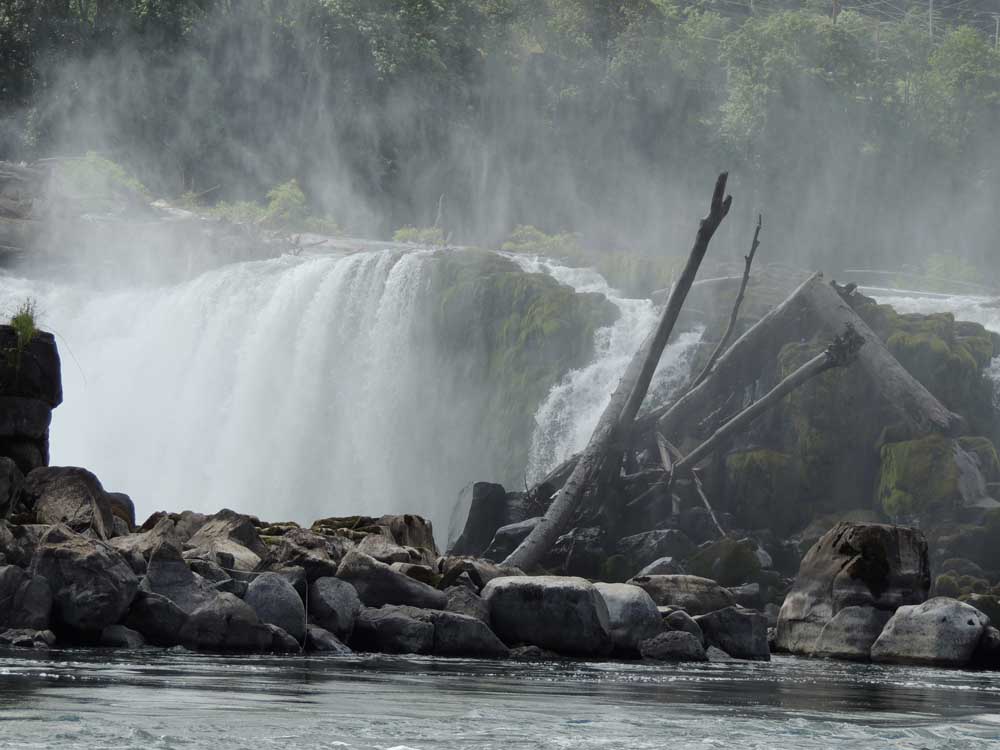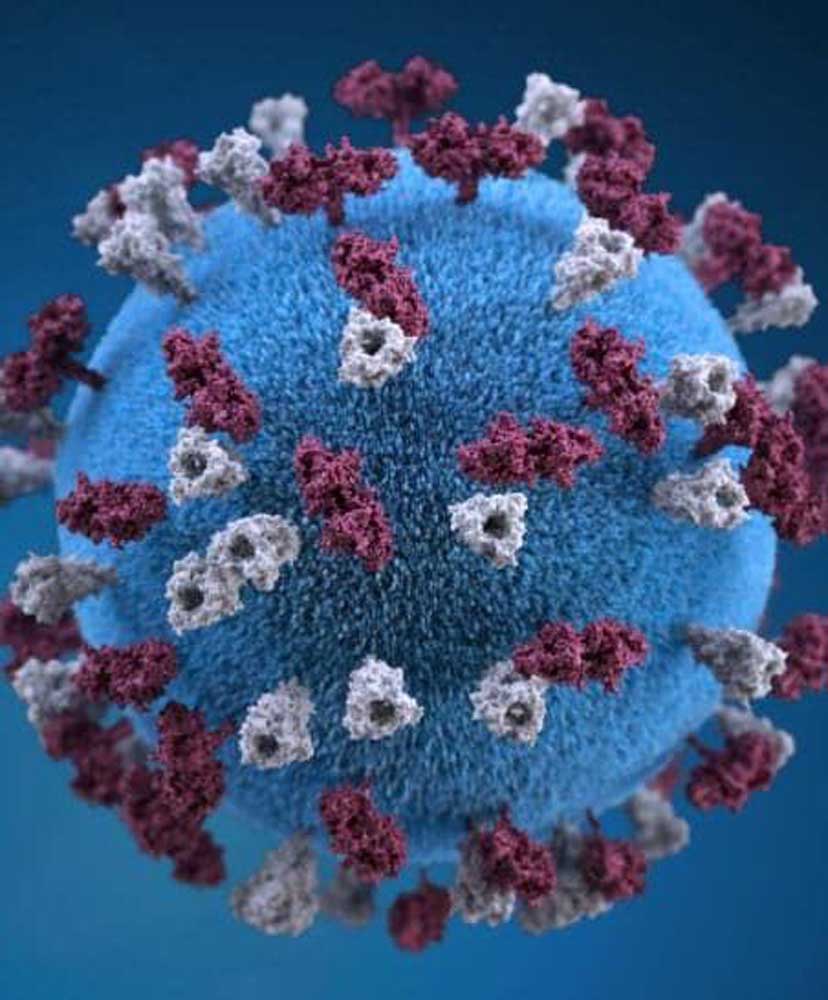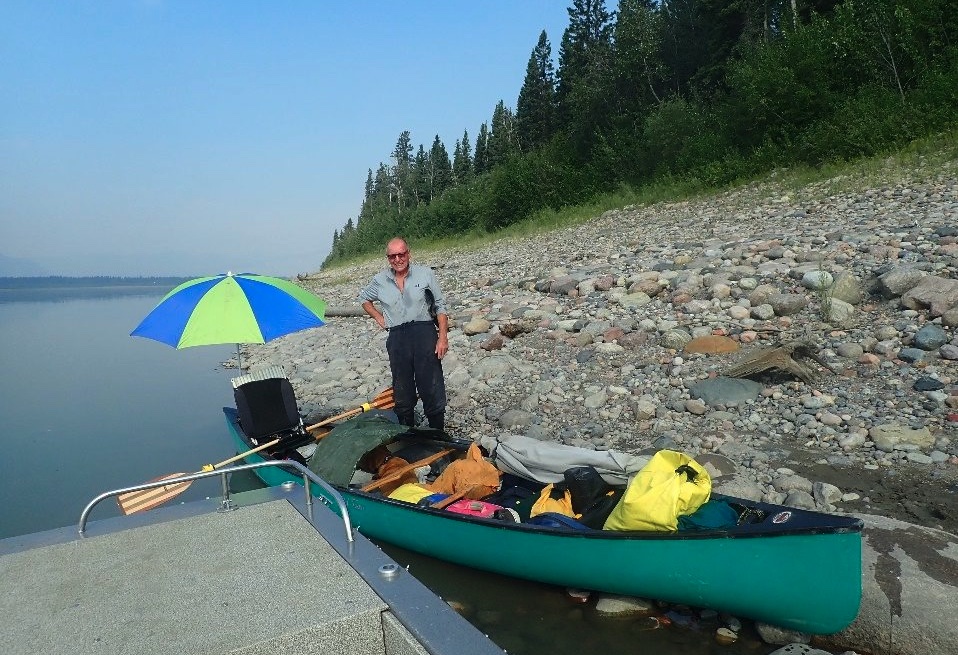Fly-fishing for shad on the Willamette River
Published 11:18 pm Tuesday, July 4, 2017

- Surrounded by historical development at the end of the Oregon Trail, there is still a residual wildness at the base of the falls at Oregon City.(Gary Lewis/For The Bulletin)
Once an old-timer told me, “The shad run when the pink dogwood blooms.”
We had a pink dogwood in our yard when we lived in Gladstone at the junction of the Clackamas and the Willamette rivers. When we moved to Oregon City in 1991, I planted a dogwood there. When it bloomed, I knew it was time to go fishing.
The largest falls in Oregon and the sixth-biggest in the United States by volume, Willamette Falls is the most significant historical natural feature in the West. Here, the Clackamas peoples and the Wasco, Warm Springs, Multnomah, Yakama, Molala, Tualatin and other tribes fished and traded for salmon and lamprey.
Above the falls, on the east bank, was a village called Canemah. Downstream, opposite the mouth of the Clackamas, stood an Indian town called Walamt, which is where the name Willamette comes from.
The Chief Factor of the Hudson’s Bay Company built the first sawmill at the falls in 1829. Here, in the 1840s and 1850s when the migration to Oregon was in full swing, all roads led to Oregon City.
My favorite way to study history is with a fishing rod in hand. As a kid, I’d bring my school books home in a bag and think about them while I fly-fished for trout in small streams that bled into the Columbia.
A person can learn a lot about the history of our state in the spray at Willamette Falls. That’s why I pulled home-schooled 12-year-old Gus Smith away from his studies to make the run to Oregon City. We parked the Ford at the Pow Wow Tree, to run our fingers in the moss and bark of a 270-year-old bigleaf maple, then checked in at the Best Western Rivershore Hotel near Clackamette Park.
In the morning, we met up with Sam Pyke for a cup of coffee, drove up to the old townsite of Canemah then trotted out on the dock to meet Rob Crandall and 11-year-old Tanner.
Overhead, on Interstate 205, commuters had conspired to spread a traffic jam between Vancouver, Washington, and Tualatin. We passed beneath the George Abernethy Bridge then went under the Oregon City Bridge and could see the falls ahead. Salmon fishermen trolled for late spring chinooks and shad anglers were anchored in various runs.
American shad were introduced to the West in 1871 when fish were released in major rivers up and down the Pacific coast. Today millions of shad still return to the Sacramento, the Umpqua, the Siuslaw, the Columbia, the Willamette and other rivers. Plankton eaters, the American shad is the biggest of the herring species and averages 3 to 5 pounds. They bite and fight with abandon.
Rob Crandall targets shad with a fly rod. In the spring when the dogwood blooms, he turns his attention to the big herring. His favorite setup is a 5-weight equipped with a 12- to 15-foot sink tip, a 30-inch Maxima leader and a pink, orange or chartreuse shad dart.
When we had three anchors overboard to hold the boat in the heavy current, Crandall made a short cast to demonstrate to Gus how to present the fly. A moment later, a shad grabbed it, ripped 10 feet of line off the reel and broke the surface in a gill-rattling tail-walk. That’s why we call them “Poor man’s tarpon.”
For the first half hour, we hooked fish on every third cast, trading places with the fly rods and the net. Gus hooked one that pulled harder than the rest — a sturgeon. When the line went slack, the 12-year-old held his hands 4 feet apart to show how long it was.
At the other end of the boat, my casting zone wasn’t as productive as the spot where Gus and Tanner were fishing, so I pulled out my secret weapon, a bottle of Pro-Cure Fish Oil Garlic Plus. Dribbling water soluble goodness on the shad dart earned me a fish the first cast each time I freshened the scent.
No one counted, but we must have brought 25 or 30 to hand in three hours. Sam Pyke and I fought two fish to the net at one time and Tanner netted them.
Shad hit the Columbia system in May and run up to Bonneville and beyond. In the Willamette River the good fishing starts when the spring run-off subsides. Anglers start to pick them up in May and can have 50-fish days in June. The action continues into mid-July.
The falls on the Willamette are 24½ miles up from the confluence with the Columbia. It is still a gathering place, but in the frenetic pace of life on the river’s banks, their significance is often forgotten. Downstream in the mill race, a student of the river has time to reflect.
I can’t help but think about shad fishing when the pink dogwood blooms.
— Gary Lewis is the host of Frontier Unlimited TV and author of Fishing Central Oregon, Fishing Mount Hood Country, Hunting Oregon and other titles. Contact Gary at www.GaryLewisOutdoors.com.








